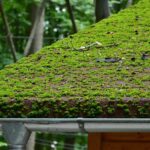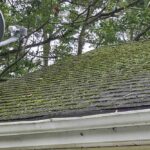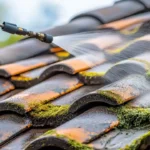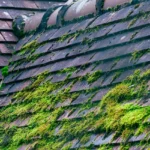Maintaining a functional roof is essential for every homeowner, and understanding how to maintain roof pitch drainage is a crucial aspect of this responsibility. Proper drainage ensures that water flows off the roof efficiently, preventing leaks and structural damage. In this article, we will explore the important steps to maintain your roof’s pitch drainage system effectively. This guide is designed to help homeowners like you preserve the integrity of your roof and protect your home from potential water damage.

Importance of Roof Pitch Drainage
The pitch of your roof plays a vital role in managing water flow. A well-maintained roof pitch ensures that rainwater and melting snow drain off smoothly, reducing the risk of water pooling and leaks. Proper drainage helps extend the lifespan of your roof and prevents costly repairs in the long run.
Understanding Roof Pitch
Roof pitch refers to the steepness or slope of your roof. It is typically expressed as a ratio of vertical rise to horizontal run. A properly pitched roof facilitates effective water drainage, directing water away from your home.
Steps to Maintain Roof Pitch Drainage
Regular Inspections
Conducting regular inspections is the first step in maintaining your roof pitch drainage. Look for signs of damage or clogs in the drainage system. Check for missing shingles, cracks, or debris accumulation.
Clear Debris and Leaves
Debris and leaves can obstruct water flow, leading to pooling and potential leaks. Regularly clear your gutters and downspouts to ensure they remain free from blockages.
Trim Overhanging Branches
Overhanging branches can deposit leaves and debris onto your roof, clogging the drainage system. Trim branches that hang over your roof to minimize debris accumulation.
Check for Proper Slope
Ensure that your roof maintains the proper slope for efficient drainage. If you notice any areas where water tends to pool, it may indicate an issue with the roof’s pitch.
Repair and Replace Damaged Components
Address any damaged components promptly. Replace missing or broken shingles, repair leaks, and fix any structural issues to maintain the integrity of your roof pitch drainage.
Install Gutter Guards
Consider installing gutter guards to prevent debris from entering your gutters. Gutter guards help maintain a clear and efficient drainage system.
Inspect Flashing and Seals
Inspect the flashing and seals around chimneys, vents, and skylights. Ensure they are intact and not allowing water to seep in. Learn more about preventing roof leaks near chimneys.
Seasonal Maintenance Tips
Winter Maintenance
During winter, ensure that snow and ice are removed from your roof promptly. Excessive snow accumulation can lead to ice dams, which can obstruct drainage.
Spring Cleaning
Perform a thorough spring cleaning of your gutters and downspouts. Check for any damage caused by winter weather and make necessary repairs.
Summer Inspections
Conduct summer inspections to check for any signs of wear and tear. The hot sun can cause shingles to deteriorate, so ensure your roof is in good condition.
Fall Preparations
Before the fall season, clear out your gutters and inspect the drainage system. Prepare your roof for the upcoming winter months.
Professional Roof Maintenance
Consider hiring a professional roofing contractor for regular maintenance. They can provide expert inspections and repairs, ensuring your roof pitch drainage is in optimal condition.
Common Drainage Issues and Solutions
Poor Water Flow
If you notice poor water flow, check for clogs or blockages in the drainage system. Clear debris and ensure downspouts are unobstructed.
Leakages
Address any leaks promptly to prevent water damage. Seal cracks and replace damaged shingles to maintain effective drainage.
Pooling Water
If water tends to pool in certain areas, it may indicate an issue with the roof pitch. Consult a professional to assess and correct the problem. For more tips, check out roofing maintenance tips.

FAQs
How often should I inspect my roof pitch drainage?
It’s recommended to inspect your roof pitch drainage at least twice a year, in the spring and fall, to ensure proper maintenance.
Can I maintain roof pitch drainage myself?
Yes, you can perform basic maintenance tasks such as cleaning gutters and inspecting for damage. However, professional inspections are advised for comprehensive maintenance.
What should I do if I notice water pooling on my roof?
If you notice water pooling on your roof, it may indicate an issue with the pitch. Consult a professional to assess and correct the problem.
For more detailed guides on roofing maintenance, visit roof inspection checklist and apply reflective roof coating for better protection.
This article contains affiliate links. We may earn a commission at no extra cost to you.








